
What is Staff Augmentation? A Model to Extend Your Team



Technological advances prompt many companies to seek out QA automation engineers, web developers, and other IT professionals around the world.
For example, in the UK, the number of hired technical experts has increased by 40% in 2 years. Companies use new options for attracting IT professionals to achieve their goals, and one of them is staff augmentation. It helps to respond to market changes and implement major development projects quickly.
We will consider what resource and staff augmentation is, the strengths of this model, and its differences from similar solutions.
Content
The coronavirus pandemic has forced businesses to try new ways to generate profits and ensure stable operations. Expanding staff was one of the solutions that made it possible to bring social and economic indicators to the optimal level.
The model implies involving specialists to carry out short-term or long-term assignments. So, IT companies get the opportunity to hire front-end and back-end developers regardless of their location.
Outsourced collaboration without labor formalities and its termination after the work is the most common way. Each party receives additional bonuses like cost minimization, company scalability, and remote earnings.
After we have figured out what staff augmentation means, the main reasons for using this model seem obvious.
According to forecasts, Global IT spending will reach about $ 1.2 trillion in 2021, which is 11.2% more than in the previous period.
The business has been under the economic impact of the COVID-19 pandemic over the past few years. Closed offices and shopping centers and restrictions on the number of people led to moving sales online and forcing employees of large IT companies to work from home.
It is expected that the global shortage of talent will reach 85.2 million people by 2030. Companies are looking for professionals with the necessary experience of 4-5 years in digital technologies. As they grow their team, they gain outsourced IT experts to build the talent pool and move the project closer to successful completion.
In 2021, if COVID-19 vaccinations reach all countries within a year, the global economy is projected to grow by 4%. New constraints and solutions to overcome the pandemic will influence these numbers.
Extended teams will complete tasks as usual, working online to service online stores or implement startups.
Hourly rates for developers worldwide range from 40 to 70 USD. The cheapest IT professionals are from Africa (41 USD) and Asia (49 USD). By hiring remote developers of the necessary qualifications, the company can avoid the costs of official employment and training of staff personnel. IT experts complete tasks in a limited time without problems with sick pay, vacation pay, etc.
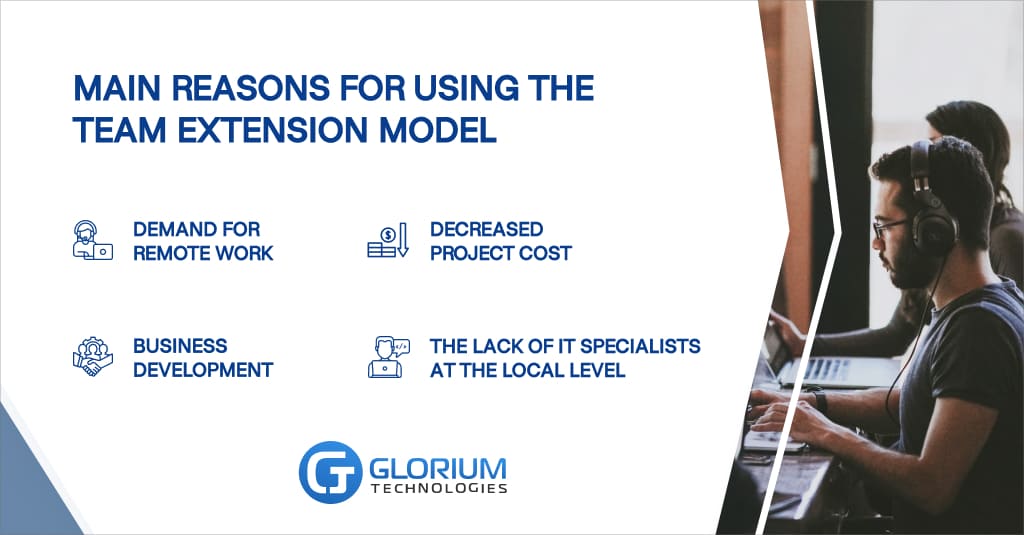
The decision to expand the staff shall be made after analyzing indicators that demonstrate the correctness of choice for business. We will cover the main ones.
Hired IT specialists provide a complete analysis of the future of the digital product industry. They calculate the time required for the project and allocate work hours according to due dates. The right team can streamline business processes and improve the software development lifecycle (SDLC).
Implementing periodic recruiting of human resources allows companies to dispose of IT professionals. Firms may reconsider the need to add or remove employees. The total number of staff will increase by attracting developers from countries with lower prices for IT services.
For example, Pakistan and Ukraine have the lowest average rates ($43-44) in terms of developer hourly rates. It is 40% less than Australia and Switzerland.
HR providers can find specialists from any IT field within the specified time frame. They must meet the technical requirements for business projects, for example, work with HTML/CSS, PHP, Javascript, or Python frameworks. Also, have experience in the customer’s areas to navigate the functionality of the created IT solution quickly.
Firms manage the work of external employees by reviewing reports of results. When outsourcing projects, customers often do not have a say, intervening only at the most critical stages. For example, when negotiating a prototype and deploying an IT product on industry platforms. If we consider the team expansion model, the supplier organizations select only human resources following the customer’s requirements.
A remote recruitment team locates IT professionals around the world based on the criteria set by the parent company. A short-term activity of a hired employee will be cheaper than registering it according to labor laws. External teams use their equipment and create a working environment. As a result, business owners avoid the costs associated with office rent, official admission to the state, corporate events, and taxes.
The market for IT professionals increases every year, as does the number of new technologies that they must master. Training in-house staff often costs a lot of time and money. It is much easier to hire experienced employees through a supplier organization. It will match developers of Android/iOS applications, blockchains, and desktop programs with the necessary technology stack.
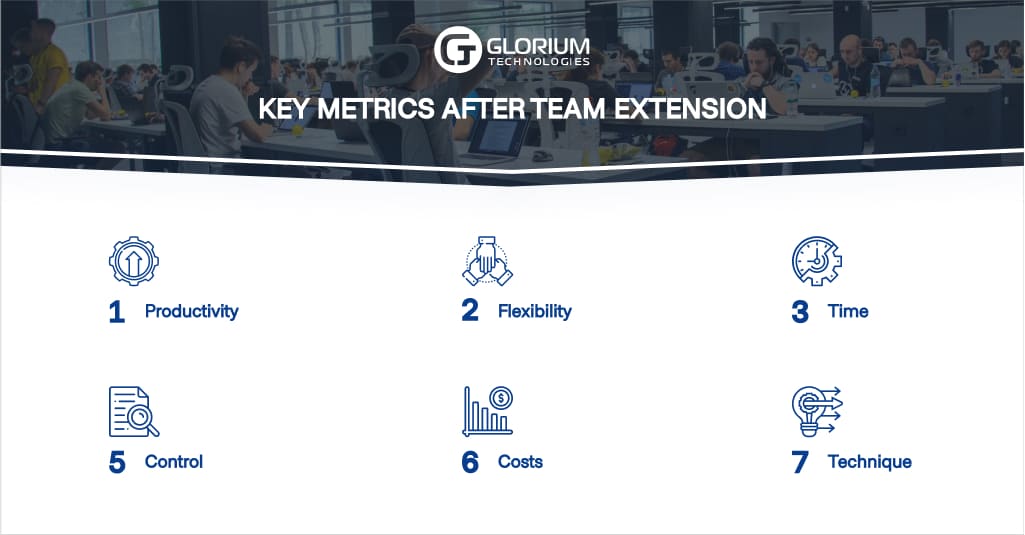
This kind involves delegating responsibilities to a third-party partner, for example, managing product development from writing source code to the deployment stage.
Most vendors do not provide a full range of services, moderating the project themselves. For example, they serve and develop websites on WordPress without supporting the infrastructure necessary for its successful operation.
Staff extension allows making personnel changes and controlling the entire process. Classic outsourced teams and hired employees rarely have all the qualifications needed for a complex project.
The main goal is to simplify the customer’s IT infrastructure management. The client pays not for hours of work but for the guarantee of receiving a working product. A Managed IT Provider (MSP) monitors and administers the client’s services.
For example, it may include the transfer of some functions of the IT department to the maintenance of a managing company, outsourcing of license management, full support of services, control of the work of third-party providers, and others.
With extended staff, the client manages the main operations, performing the functions of a project manager.
A dedicated team is formed by an outsourcing company, recruiting IT talents in various fields, such as testing, design, project management, or development. The model assumes the transfer of all functional responsibilities for the project to a remote team.
The supplier acts as a reliable partner and oversees the project creation process or other tasks, assuming the costs of office maintenance, staff training, and equipment. The responsibility of the customer does not include the arrangement of employees and the result obtained.
Project or company managers control additional staff. They must be involved in all aspects of the terms of reference to ensure that the work is completed on time and within budget.
Companies benefit from a staffing model by employing IT professionals with a broad skill set. External employees sign a non-disclosure agreement (NDA) to ensure the safety of the company’s innovative products.
The main points essential for the flexible recruitment of IT professionals:
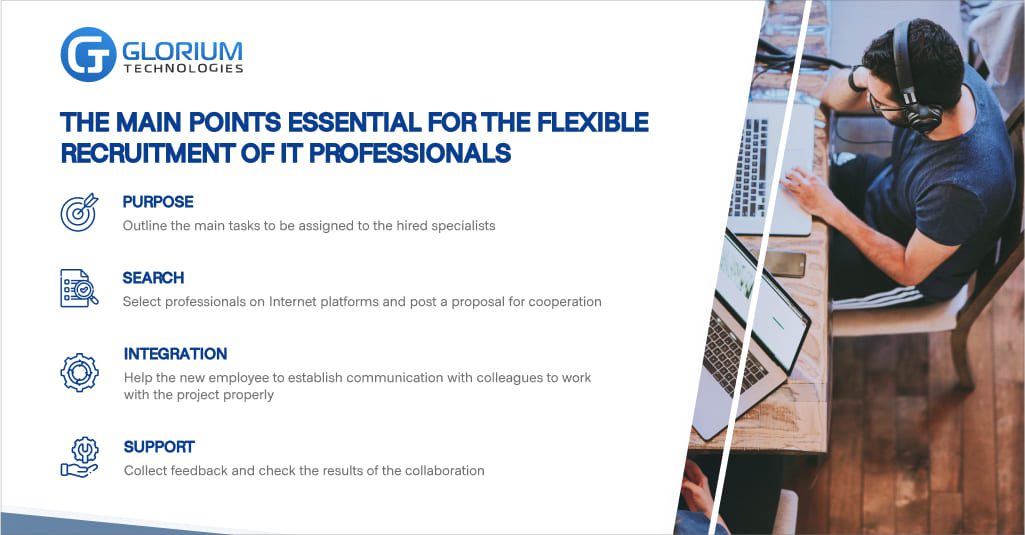
When choosing staff augmentation, consider the advantages (experience, team scaling, and cost savings) and disadvantages (adaptation time, long-term costs) of this approach. Analyze a future project and find a talented IT professional.


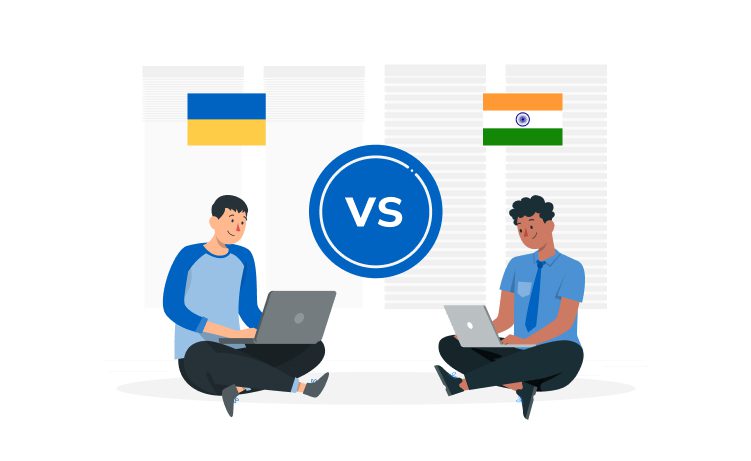





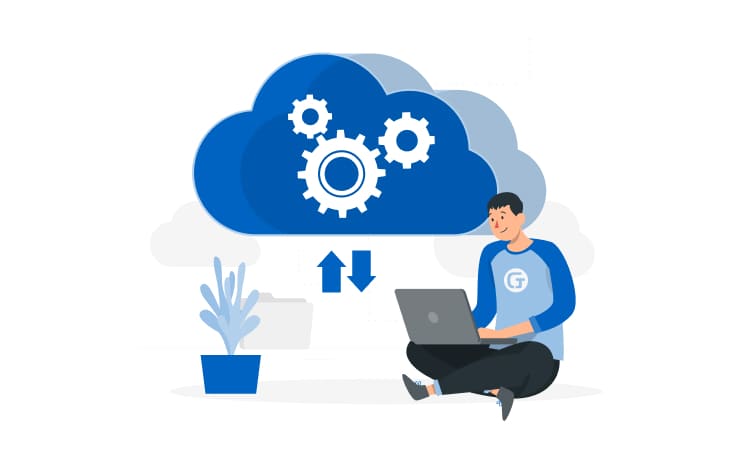
| Cookie | Duration | Description |
|---|---|---|
| cookielawinfo-checkbox-analytics | 11 months | This cookie is set by GDPR Cookie Consent plugin. The cookie is used to store the user consent for the cookies in the category "Analytics". |
| cookielawinfo-checkbox-functional | 11 months | The cookie is set by GDPR cookie consent to record the user consent for the cookies in the category "Functional". |
| cookielawinfo-checkbox-necessary | 11 months | This cookie is set by GDPR Cookie Consent plugin. The cookies is used to store the user consent for the cookies in the category "Necessary". |
| cookielawinfo-checkbox-others | 11 months | This cookie is set by GDPR Cookie Consent plugin. The cookie is used to store the user consent for the cookies in the category "Other. |
| cookielawinfo-checkbox-performance | 11 months | This cookie is set by GDPR Cookie Consent plugin. The cookie is used to store the user consent for the cookies in the category "Performance". |
| viewed_cookie_policy | 11 months | The cookie is set by the GDPR Cookie Consent plugin and is used to store whether or not user has consented to the use of cookies. It does not store any personal data. |